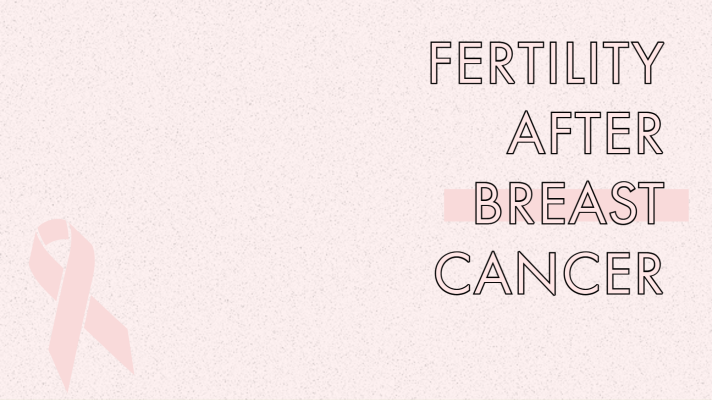The average age for first-time motherhood in the United States has been steadily increasing. In 2020, moms welcomed their first baby, on average, at 29.3 years old. In light of this increased average age of motherhood, there is a growing number of women who may have had a breast cancer diagnosis that have not completed (or perhaps, not even started) having children.
1 in every 8 women will develop breast cancer sometime in her life, and 6-10% of those cases occur in women under the age of 40.
With improved cancer screening methods, early diagnosis, and good after-cancer-treatment prognosis, more and more breast cancer survivors are grappling with the question of pursuing pregnancy and family building post-cancer treatment. Most doctors agree that it is best to pursue pregnancy at least two years after the cancer diagnosis; however that may not always be possible for some women.
Even if preservation of fertility was discussed before treatment, sometimes resulting in cryopreserving embryos created through in vitro fertilization (IVF), pursuing pregnancy is not always an easy decision. Especially for women who were diagnosed with hormone receptor-positive breast cancer (cancer cells that grow in response to hormones the estrogen and progesterone). The tension in this decision lies with the desire to welcome a baby into this world contrasted with the fear of a recurrence of a hormonally-fed breast cancer.
While there are not vast amounts of medical studies on this topic, the existing studies suggest that pregnancy after breast cancer does not increase a woman’s risk of developing a recurrence from her breast cancer. Furthermore (and thankfully), the most recent data suggests this is also the case in women with a hormone receptor-positive breast cancer. And last, but certainly not least, healthy babies are born with no increased risk for delivery complications. That is good news!
The other conundrum that breast cancer survivors tackle once they have decided to pursue pregnancy is whether it is possible for spontaneous conception to occur, or if they will need assistance through assisted reproductive technology (ART).
Data suggests that the chance to conceive spontaneously after cancer treatment is reduced by 50%, and that is only when a woman has been able to maintain her fertility after chemotherapy treatment.
Oftentimes, when a couple did not have the chance to cryopreserve embryos previously, their thoughts will go to IVF. Part of the IVF process involves a process of Controlled Ovarian Stimulation (COS). The medications involved in the process of inducing egg stimulation and retrieval can be concerning to breast cancer survivors because of increased estradiol levels. An option that many breast cancer survivors investigate is embryo adoption. In this way, many of the hormone inducing medications, especially for egg stimulation, are not involved because the embryo is already created and just waiting to be transferred. But even with embryo adoption, there are still medications that may be prescribed to prepare the uterus for the frozen embryo transfer (FET) that may cause concern.
In summary, pursuing pregnancy after cancer treatment is a complicated decision. Regardless of how families decide to pursue this path, it is important to have up-to-date knowledge of the effectiveness and safety of current procedures. Involving your reproductive specialist and oncology team is an essential aspect of pursuing this path.
For more information about embryo adoption and donation, visit EmbryoAdoption.org.


Recent Comments